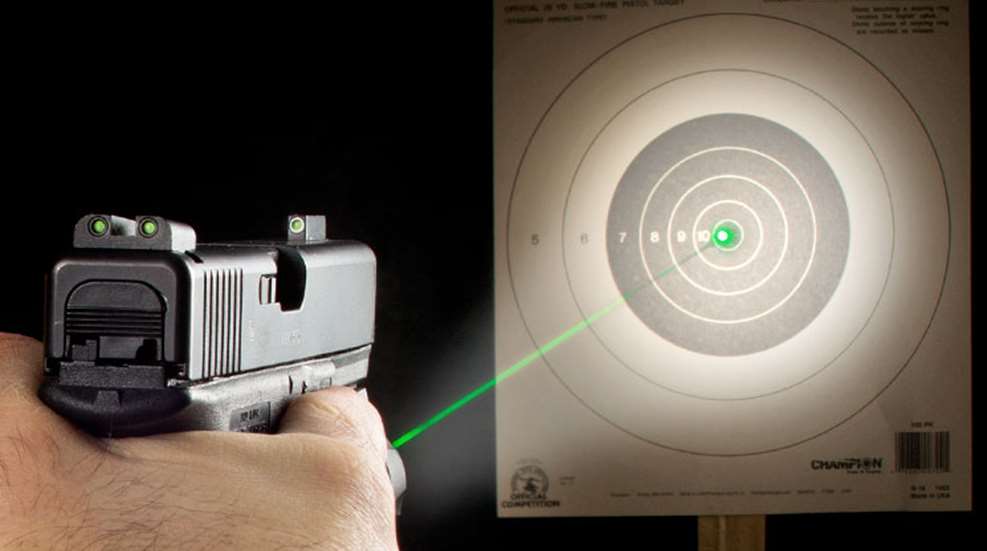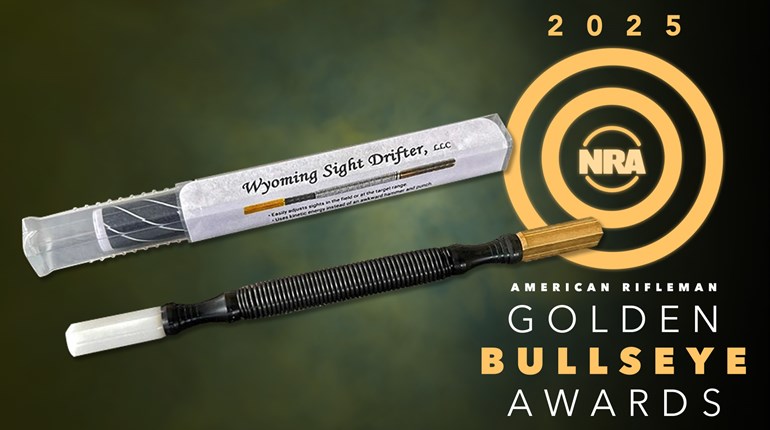
Long ago, when I was a competitive shooter in the Air Force, a Master Class shooter sarcastically responded to one of my gear queries, saying “I encourage all my competitors to try something new on match day.” I never forgot the message.
It’s many years later and I’m listening to a presentation by Wes Doss of Khyber Interactive Associates, during one of his stops on the annual Lights, Sights and Lasers tour. During the course of a year, Doss visits a number of police and military facilities providing information and training. On this occasion, we were at a police training range outside of Salt Lake City, UT. Most of the attendees were cops, with one or two military personnel scattered in. It’s a shame Doss can’t include civilians in his sessions, because the message delivered to police is equally valuable to armed civilians and CCW-permit holders.
One of his opening statements is “Police work is largely reactive, not proactive.” For civilians, it’s 100-percent reactive, since we are not dispatched to quell disturbances or make arrests. He also said, “Training seldom reflects the realities of our [police] occupation, but it will help physical handling of weapons and accessories. We [police] seldom dictate time and place of an engagement.” Again, right on for the civilian population, and improving one’s physical handling of the chosen firearms and accessories is worthwhile preparation for any hostile encounter.
Statistics were presented for the 540 shots fired by New York police in 2006. At engagement distances of 6 feet or less, 252 shots were fired, of which 107 hit the intended target. At distances beyond 6 feet, 288 shots were fired, of which 75 hit their intended target. That’s 358 bullets that traveled past the intended target and hit something in New York besides bad guys committing crimes.
Doss gave an excellent summation of lights, sights and lasers, including a much briefer and less Zen-like version of the famous Steinbeck quote about every tool besides the brain being supplemental. He simply said, “The operator is number one, the weapon is number two.” He also gave excellent, brief summaries of the three subject accessories. “Sights are the primary device for accurate and effective fire,” he noted. And he did illustrate with real products the difference between combative and target sights.
“Lights are a supplemental tool that aid in decision-making. Ineffective use can make light a liability rather than an asset,” Doss said. He showed the different techniques and recommended learning more than one, since there is no universal solution—every encounter is different. We honed our skills with these techniques on the range.
“Lasers are a supplemental aiming device that go beyond standard sight acquisition,” Doss explained. “They have no language barrier and provide a clear indication of intent.” Within limits, they are a real game-changer. He stressed that a transition to and through modern optics requires training, but results in significant performance enhancement.
The vast majority of human decisions are based upon information received through our eyes. There’s an old saying about how we can’t fight what we can’t see. And it gets worse. Lose your vision, and you lose your decision-making ability due to lack of information.
Some real-life numbers were presented, such as human vision typically being 20/180 after full adaptation to moonlight conditions. As your nervous system kicks in, your heart and respiratory rates increase and your fine motor skills decrease. Your eyes also aid in maintaining balance and are essential for hand/eye coordination. Include the phenomenon of tunnel vision and auditory exclusion, and your information-gathering ability declines even more. Consider that most engagements last about 2.5 seconds, so it’s clear you don’t have time to “figure things out.” Your reaction needs to be reflexive, not thoughtful, and human-reaction time is most improved through practice. In other words, rehearse the required moves.
There have been a number of what Doss calls “myths and fallacies” about lasers that he debunked in the classroom session and had the shooters explore on the range. All the other shooters had lights and lasers on their carbines and/or pistols, so it was mostly me who was enlightened by the range sessions while we ran through some drills.
When you can’t see your sights, you’ll make hits faster using a laser. There have been times when I couldn’t see the red dot downrange, particularly on bright days in the southwestern part of the country, but that was several years ago with early models of lasers and on targets many yards downrange. With current lasers at close range—the more typical engagement distances—I haven’t had any problems.
Some say lasers can’t be zeroed or can’t hold zero, but I’ve had no difficulty zeroing any lasers I’ve used. Like red-dot sights, lasers require little movement to produce noticeable changes in points-of-impact, and if you remove the laser from the gun, you should always re-verify zero after re-installing.
Others have said lasers and such are susceptible to failure. Yes, anything can be broken, but many of today’s laser sights are mil-spec tough, and most civilian engagements last a few seconds, rather than the prolonged gun battle depicted in “Lone Survivor.” Battery replacement should be a periodic, scheduled maintenance event.
Doss’ training session was split between classroom and range with something less than half a day on the line. During that time he emphasized importance of learning to use all the accessories, including mastering transitions from one to the other. Range time was late in the day, making it necessary to transition from iron sights or regular optics to lasers and weaponlights. This was not a basic marksmanship program, but rather an advanced skill class, and all the participants were well trained in weapon basics. Sometimes you’re forced to try something new on match day.






































